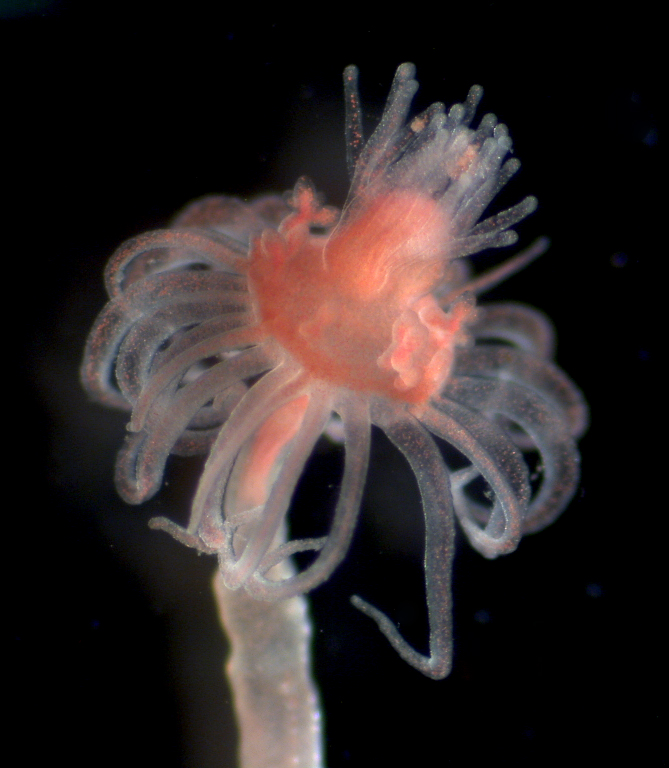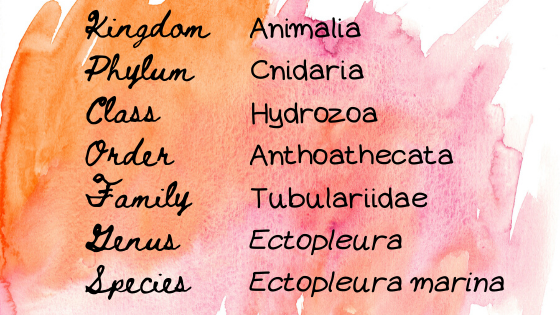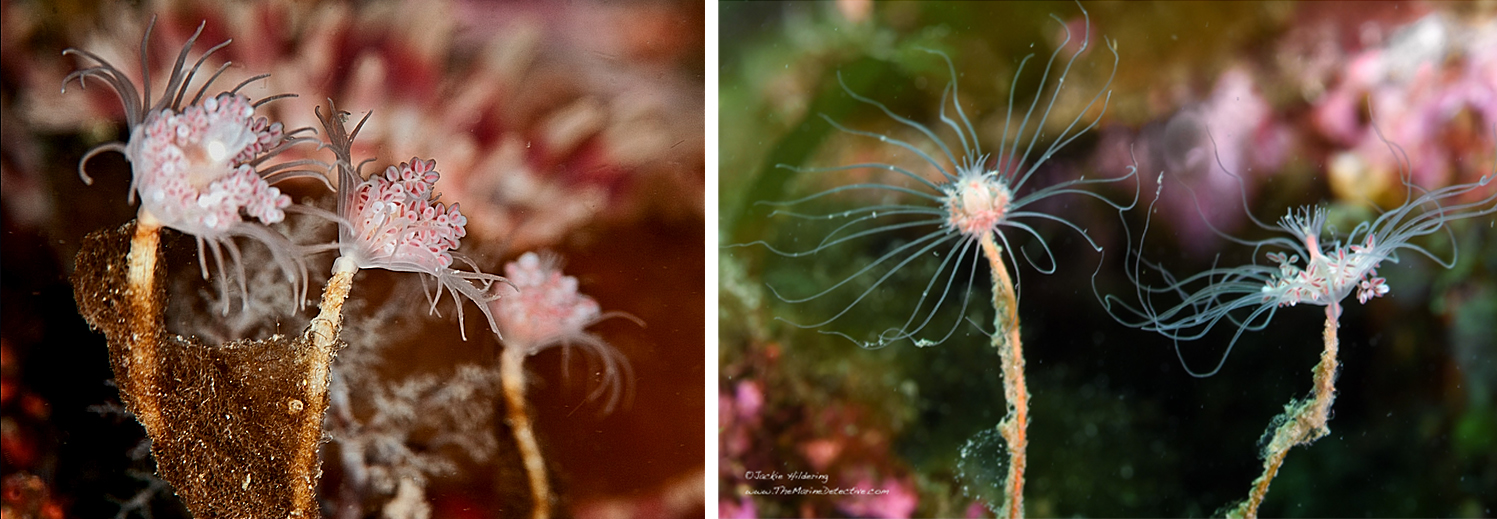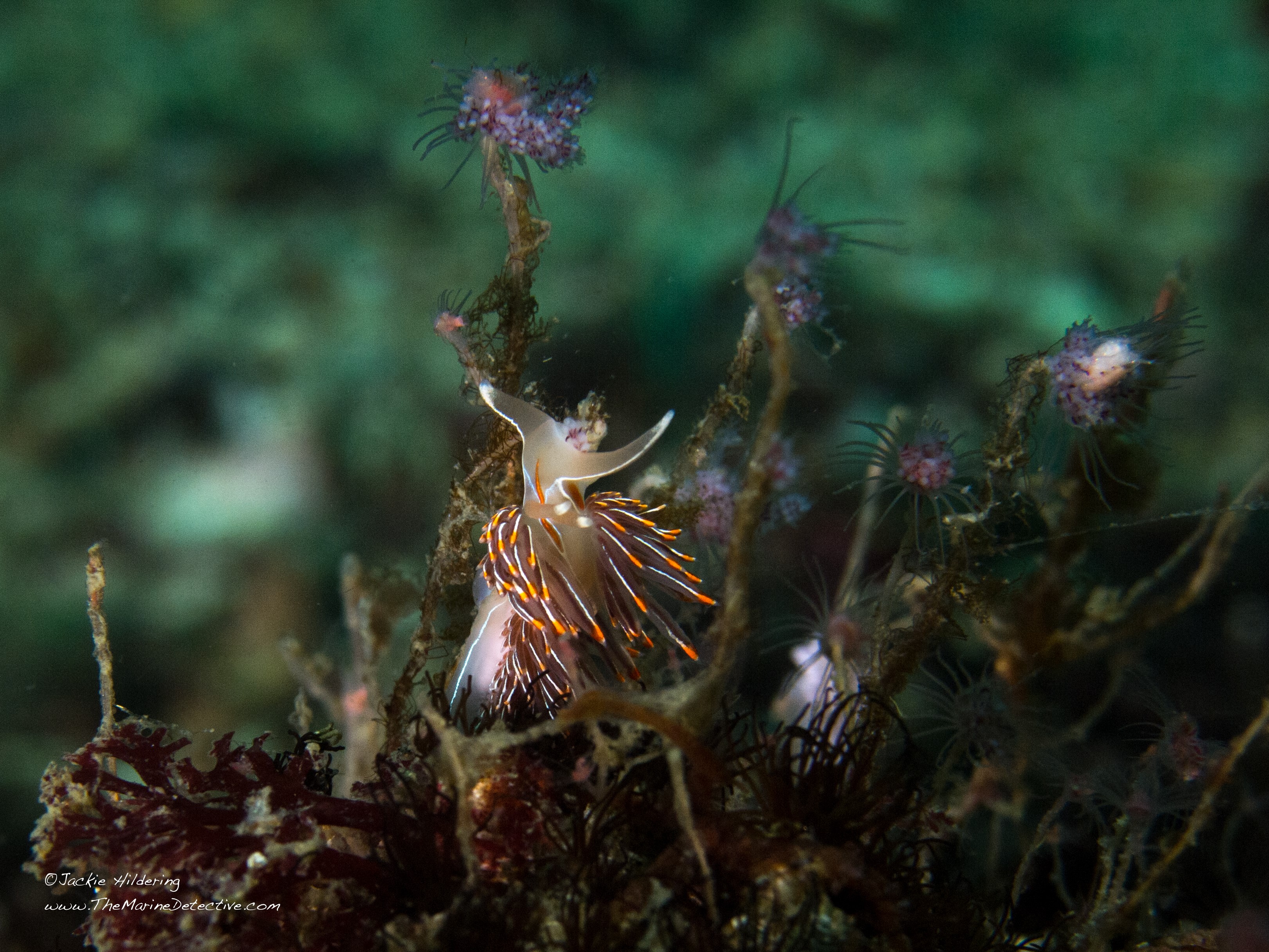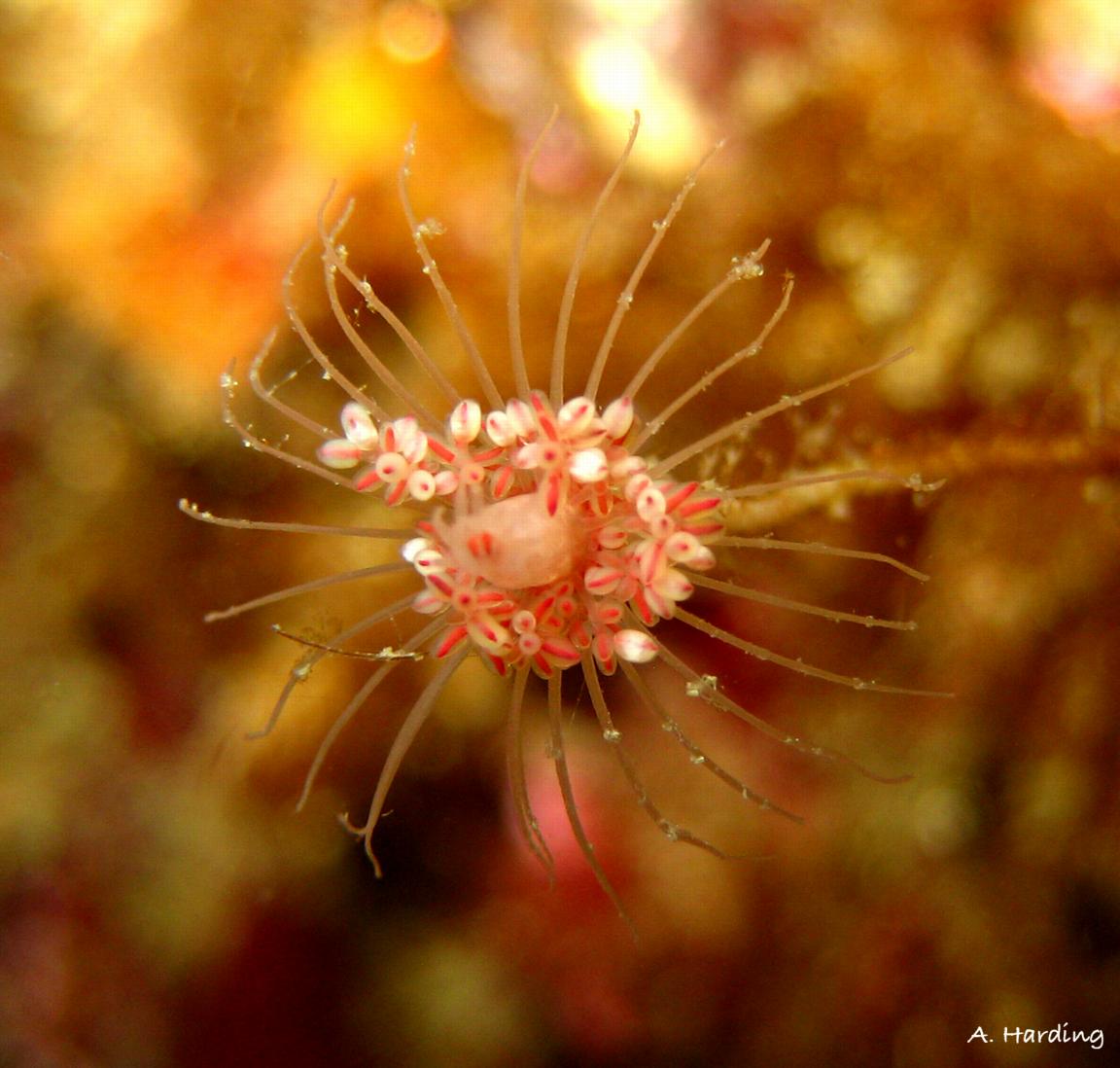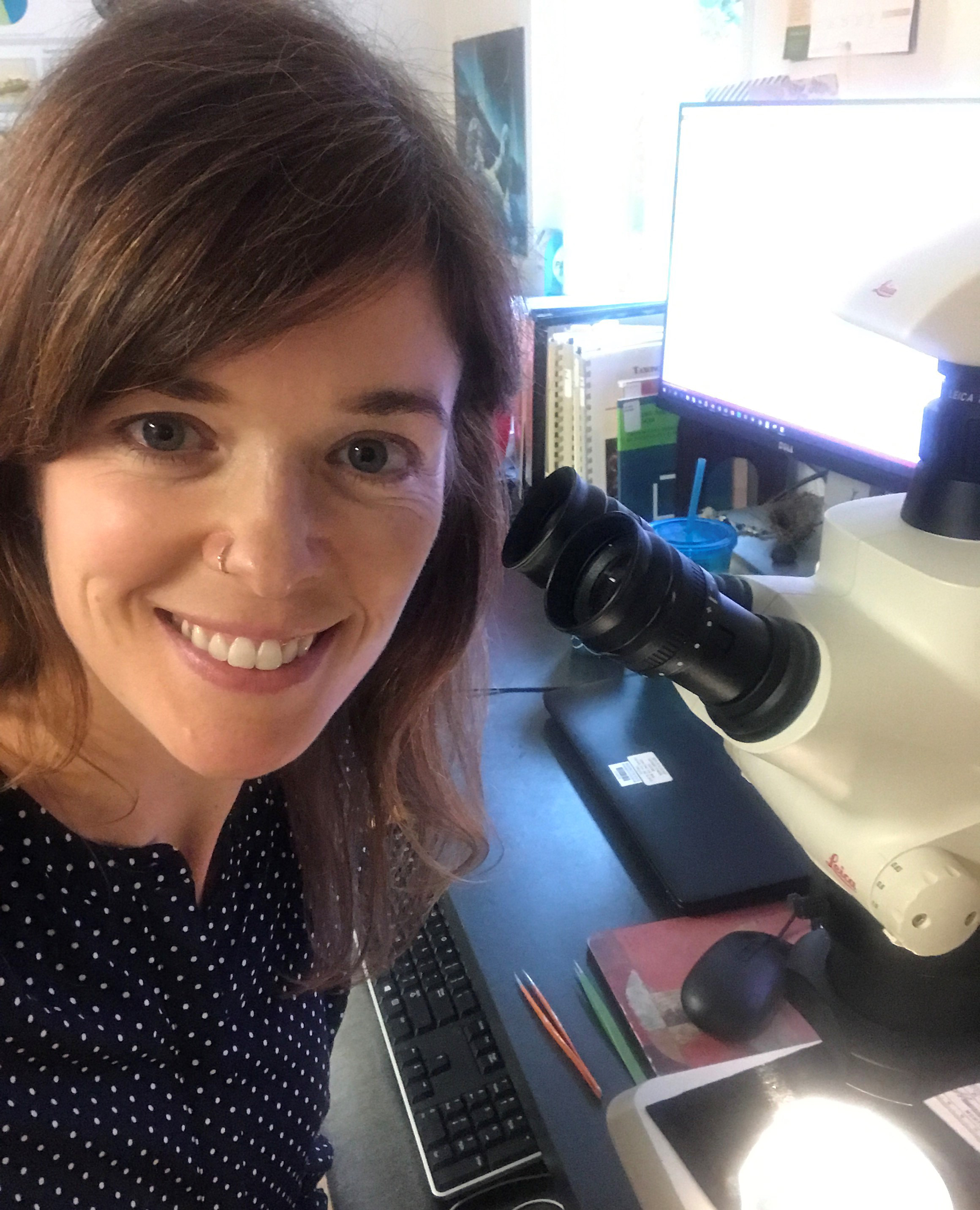Social circle
Hydroids are the lesser-known cousins of corals, jellyfish, and anemones. Like corals, hydroids typically form colonies, with many polyps physically connected and functioning as one organism.
Tropical state of mind
Beautiful and delicate, E. marina looks more like a tropical palm tree waving in the spring breeze than an animal — that is, if palm trees came in pink and lived underwater! Their habitats of choice are rocks, floats, and other hard surfaces in the low intertidal and subtidal zones where the current is fast-flowing, especially on exposed or semi-protected rocky shores. In Puget Sound, they love the Nisqually Reach area, where they can stick onto small pebbles and the hard tubes of other organisms. LEFT: Ectopleura marina. Photo by Ryan Murphy, Race Rocks Ecological Reserve. RIGHT: E. marina polyps with feeding tentacles extended. Photo courtesy of Jackie Hildering, www.TheMarineDetective.com
Mouthing off
Tough, chitinous filaments at the base of E. marina’s slender, three-inch stalk keep it anchored in place so it can focus on what it does best — feeding. The pom-pom of tentacles at the top of the stalk are arranged in two rings: an inner ring of short oral tentacles around the mouth and a longer outer ring of feeding tentacles that reach out to snag prey. Like all cnidarians, their feeding tentacles contain stinging cells called nematocysts that stun small crustaceans, chaetognaths, marine worms, and any planktonic larvae that happen to be drifting by. Opalescent nudibranch on the attack! Photo courtesy of Jackie Hildering, www.TheMarineDetective.com
You might think stinging cells would also deter predators, but guess again. E. marina is a favorite food of the voracious opalescent nudibranch. Instead of shying away from the hydroid’s secret weapon, the nudibranch chows down on the tentacles and incorporates the nematocysts into its own tissues.
Baby pink
The little blobs between E. marina’s tentacle rings are reproductive structures called gonophores. Each hydroid polyp is a single sex, and the gonophores produce either eggs or sperm. Sperm are released into the water, but fertilized eggs stay in the gonophores and develop into larvae called actinulae. After the tiny, tentacled actinulae hatch out, their first act of business is finding a place to settle. Generally, this means posting up close to their parents while leaving plenty of space to maintain their solitary and independent lifestyle. Top view of Ectopleura marina polyp. Photo by A. Harding, courtesy of Race Rocks Ecological Reserve
Critter of the Month
Dany is a benthic taxonomist, a scientist who identifies and counts the sediment-dwelling organisms in our samples as part of our Marine Sediment Monitoring Program. We track the numbers and types of species we see to detect changes over time and understand the health of Puget Sound.


